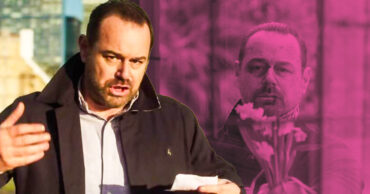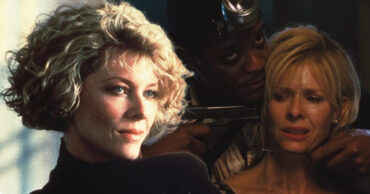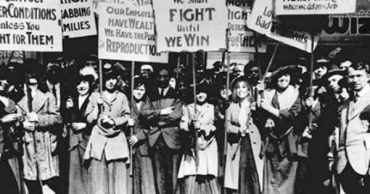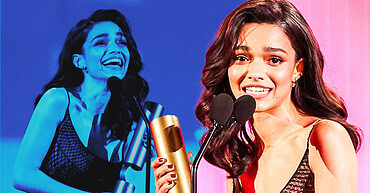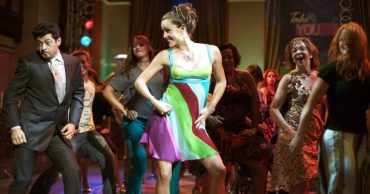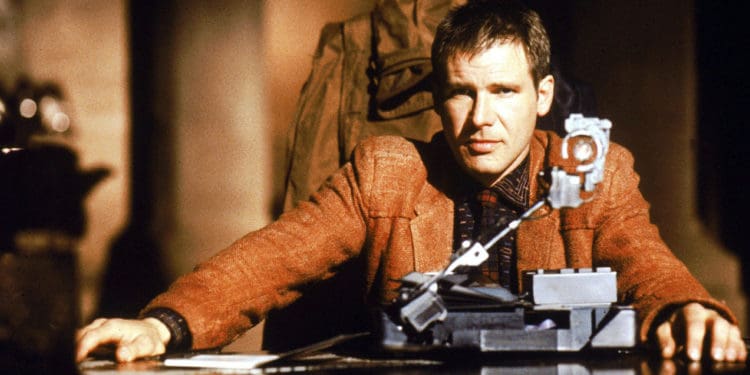
There was so much good cinematographic talent out there that we just had to split this into two! In this second list of Top Cinematographers and Their Works You Will Fall in Love With, we bring to you some more great names in cinematography, especially those whose work has been recognized by the Academy of Motion Picture Arts and Sciences. With several nominations and wins to their name, these greats in cinematography are associated with some of the most memorable works in cinema across the decades. Providing inspiration to several generations of others in their craft, they have proved to be pioneers in more ways than one.
W. Howard Greene
In the early years of cinema, when the move from black and white to color heralded a new beginning, were not just euphoric but also challenging. While new technologies were only just evolving, it was up to the technicians, cameramen, and cinematographers to decipher all that was going on and create the best works by experimenting with all that was being made available. It was during this time that William Howard Greene took on the responsibility of heading the cinematographic revolution, lending his expertise to many early works in Technicolor. Thanks to his innovations, experimentations and pioneering work during this important era of filmmaking, the Academy of Motion Picture Arts and Sciences bestowed on him several laurels. In addition to his nine nominations in the Best Cinematography category, W. Howard Greene also had to his name a Special Academy Award for color cinematography in The Garden of Allah, an award he shared with Harold Rosson, another Special Academy Award for A Star is Born, and an Academy Award for Best Cinematography for Phantom of the Opera. One of the American cinematographers who led the way in what was a challenging yet exciting time for the world of cinema, the contributions of W. Howard Greene during these formative years of color cinematography will always remain noteworthy.
Victor Milner
Born on December 15, 1893, in New York, Victor Milner’s first tryst with the film industry was as an assistant to Eberhard Schenider, a manufacturer of different equipment that Hollywood used to make its movies. It was during this time that Victor worked on the first of his movies. Embarking on several interesting journeys to take pictures, from the mines of Colorado to the Belgian Congo, Victor was even arrested by Soviet soldiers along with his son when he lost his way during a trip to Berlin and ended up asking Russian soldiers for directions. His adventurous life is reflected in his works on screen too and his experimentations with the camera and all that it could do are well-known. During his career, Victor notched a whopping nine Academy award nominations and picked up a win for the 1934 classic, Cleopatra. While some of his pioneering works included The General Died at Dawn, The Crusades, and The Buccaneer, he also had a long list of other notable movies to his name. These included On the Stroke of Three, One Hour with You, Her Night of Romance, The Princess and the Pirate, Unfaithfully Yours, Monte Carlo, The Palm Beach Story, The Great Victor Herbert, The Strange Love of Martha Ivers, The Woman From Moscow, and The Cat’s Pyjamas. One of the founding members of the renowned American Society of Cinematographers, Victor was also the president of the institution from 1937 to 1939. Victor passed away in Los Angeles, California, in 1972 at the age of 78.
Harry Stradling
Harry Stradling’s family could be labeled a family of cinematographers — his uncle, his son, and even his godson were cinematographers — and by the time Harry called it a day, he had more than 130 films to his credit. First beginning his career in Hollywood, Harry moved to France and Germany in search of good work and was a part of several movies made by Jacques Feyder. He also worked on quite a few English titles before he returned to the United States. Working with Alfred Hitchcock, the duo worked on two highly popular titles of the time, Mr. & Mrs. Smith and Suspicion. An avid photographer, Harry had to his list of clients the most famous names in the industry including Jean Simmons, Judy Garland, Audrey Hepburn, Lucille Ball, and Barbra Streisand. Some of Harry’s most prominent works that caught the attention of the Academy of Motion Picture Arts and Sciences included The Human Comedy, The Picture of Dorian Gray, The Barkleys of Broadway, A Streetcar Named Desire, Hans Christian Andersen, Guys and Dolls, The Eddy Duchin Story, Auntie Mama, The Young Philadelphians, A Majority of One, Gypsy, My Fair Lady, Funny Girl, and Hello, Dolly!. Some other titles that proclaimed Harry as one of the masters of cinematography at the time included The Divorce of Lady X, The Dark at the Top of the Stairs, How to Murder Your Wife, The Owl and the Pussycat, On a Clear Day You Can See Forever, Marjorie Morningstar, A Lion is in the Streets, In the Good Old Summertime, and Edge of Doom.
Roger Deakins
The name of Roger Deakins was often heard in awards shows ranging from the Academy Awards and the BAFTAs to other shows across the United States and the UK and Roger was one of the few cinematographers who were members of both the American Society of Cinematographers and the British Society of Cinematographers. In addition to his list of awards for his works, Roger was bestowed with the title of CBE, The Most Excellent Order of the British Empire, the title of Knight Bachelor, a Lifetime Achievement Award presented to him by the American Society of Cinematographers, and was recognized as an Honorary Fellow of the National Film and Television School in England. Roger’s early jobs included working as a cameraman and then, as a production assistant for almost seven years. He then worked in documentaries and traveled across the globe for his works, including trips to Sudan, India, Zimbabwe, and even on a yacht in the Whitbread Round the World Race. With a pretty long list of awards to his name, some of the most prominent ones on the list include Academy Awards for Best Cinematography for Blade Runner 2049 and 1917, British Academy of Film and Television Awards for the same movies as well as The Man Who Wasn’t There, No Country for Old Men, and True Grit, and two Independent Spirit Awards for Fargo and A Serious Man. In addition to these award-winning works, Sir Roger Alexander Deakins has also played his part in bringing to life several other noteworthy titles including The Shawshank Redemption, O Brother, Where Art Thou?, Skyfall, Sicario, A Beautiful Mind, The Goldfinch, Unbroken, The Reader, The Village, The Secret Garden, and The Company Men.
Charles Rosher
Charles Rosher was born in London, England, and began his career when silent films were still a thing, and continued contributing as one of the best cinematographers until he retired in 1955. A personal favorite of Mary Pickford and also his friend, Charles was a permanent part of the crew when it was a Mary Pickford film between 1918 and 1927. These titles included Rosita, Sparrows, My Best Girl, The Love Light, Johanna Enlists, Little Annie Rooney, How Could You, Jean?, A Little Princess, The Hoodlum, Captain Kidd Jr., Pollyanna, Through the Back Door, Dorothy Vernon of Haddon Hall, and My Best Girl. All was well until they had a falling out during the filming of Coquette in 1929. Among the movies that won him accolades and even wins at the Academy Awards included Sunrise: A Song of Two Humans, The Yearling, The Affairs of Cellini, Kismet, Show Boat, and Annie Get Your Gun. Among his other accolades include a fellowship awarded by the Society of Motion Picture Engineers, the George Eastman Award, and a Gold Medal Award from Photoplay magazine. Some of his other notable works apart from the ones with Mary included Assignment in Brittany, Song of the Thin Man, The Red Danube, Fiesta, My Love Came Back, Yes, My Darling Daughter, Kiss Me Kate, Show Boat, The Vagabond Queen, Three Women, Three Cheers of the Irish, Small Town Girl, and Broadway Melody of 1936.
Ray Rennahan
Ray Rennahan, apart from the distinctions of being among the handful of cinematographers to be honored with a star on the Hollywood Walk of Fame and a two-time president of the American Society of Cinematographers, also had to his name two Academy Award wins and a total of 8 nominations. Titles that earned him nominations included Drums Along the Mohawk, Down Argentine Way, Lady in the Dark, The Blue Bird, Louisiana Purchase, For Whom the Bell Tolls. The ones that got him wins were Gone With the Wind and Blood and Sand. In addition to these accolades-earning titles, Ray also lent his brilliance to other projects, including Wings of the Morning, Mystery of the Wax Museum, The Great Missouri Raid, A Connecticut Yankee in King Arthur’s Court, Denver and Rio Grande, The Guns of Fort Petticoat, The Cat and the Fiddle, Silver City, Gold Diggers of Broadway, The Perils of Pauline, Stranger on Horseback, and The Three Cabelleros, among others.
Robert Surtees
Robert Surtees is a name synonymous with cinematographic excellence and during his career that lasted for more than 45 years between 1931 and 1978, notched quite a few accolades to make him one of the most successful cinematographers in Hollywood. Adored for his dedication and ability to find innovative solutions to seemingly serious problems, Robert worked with several studios during his time, though most of his best work came from his time with MGM. Some of the most notable titles that owe Robert his hold over the finer nuances of cinematography include The Graduate, The Last Picture Show, The Bad and the Beautiful, The Turning Point, Ben Hur, King Solomon’s Mines, Thirty Seconds Over Tokyo, Oklahoma!, The Sting, Quo Vadis, Summer of ’42, Mutiny on the Bounty, Doctor Dolittle, A Star is Born, and The Hindenburg. Among these titles were those that got him Academy Award wins — King Solomon’s Mines, The Bad and the Beautiful, and Ben Hur.
George J. Folsey
George J. Folsey was active in the film industry for more than half a century and during this time, garnered a name for himself that few others could surpass. By the time he wrapped up his career, he had his name on the credit rolls of more than 162 films. Of course, his work also brought him several accolades and honors, including a Lifetime Achievement Award by the American Society of Cinematographers, of which he was a Board Member and also President between 1956 and 1957. While some of George’s most prominent works that found the limelight included The White Cliffs of Dover, The Cobweb, A Life of Her Own, Seven Brides for Seven Brothers, The Clock, Meet Me in St. Louis, The Letter, Animal Crackers, A Guy Named Joe, Million Dollar Mermaid, The Fugitive, The Harvey Girls, Adam’s Rib, The Balcony, The Great Ziegfeld, and Cash McCall, he also had to his name several other brilliant works including Married Bachelor, The Enchanted Cottage, Ladies At Play, No Place to Go, Take Me Out to the Ball Game, Glorifying the American Girl, Naughty but Nice, The Man From M.A.R.S., The Trial of Mary Dugan, Andy Hardy’s Double Life, and The Fastest Gun Alive, among others. Although George’s works found their way onto the list of nominations at the Academy Awards 13 times, he failed to register even a single win. Even so, a lack of wins certainly does not undermine his contribution to the world of cinematography, and wins or not, George remains one of the most nominated cinematographers at the Academy.
Charles Lang
When you have 18 Academy Award nominations to your name, you have to be among the most extraordinary cinematic minds of all time, and that’s exactly who Charles Lang was! Born in Utah in 1902, Charles was a prominent part of the crew at Paramount Pictures for more than 20 years and later took on the role of a freelance cinematographer. Some of the works that won him nominations include The Right to Love, How the West Was Won, Butterflies are Free, Sudden Fear, The Ghost and Mrs. Muir, The Right to Love, So Proudly We Hail!, Queen Bee, Some Like it Hot, Arise, My Love, The Facts of Life, A Foreign Affair, Sabrina, Bob & Carol & Ted & Alice, The Uninvited, Sundown, Separate Tables, and One-Eyed Jacks. The one that got him an Oscar was A Farewell to Arms. In addition to all the recognition he received from the Academy, he was also honored with a Lifetime Achievement Award from the American Society of Cinematographers. Some of the other notable titles Charles lent his cinematographic expertise to included Gunfight at the O.K. Corral, The Magnificent Seven, The Matchmaker, The Big Heat, and Charade.
Leon Shamroy
Sharing the record for the most Academy Award nominations in the category of Best Cinematography with Charles Lang, and sharing the record for most wins with Joseph Ruttenberg, Leon Shamroy was an American cinematographer who was probably the best Hollywood has ever seen. And although he often rubbed people the wrong way for implying more than once that he was the best out there or in his quest for perfection, it was probably his stubbornness and arrogance that helped him deliver the best, always! Leon also had a very different view of the role of the camera in a scene. “The obtrusive camera is like a chattering person — something we can do without,” he had said. “It’s okay for the camera to join the conversation, so to speak, but it must never dominate.” At the Academy, his nominations included The Young in Heart, Ten Gentlemen from West Point, Prince of Foxes, Down Argentine Way, The Snows of Kilimanjaro, David and Bathsheba, The Egyptian, The Robe, The King and I, Love is a Many Splendored Thing, South Pacific, The Agony and the Ecstasy, The Cardinal, and Porgy the Boss. The wins that came his way came for his works in Cleopatra, Leave Her to Heaven, Wilson, and The Black Swan. Leon was also among the first people to welcome Marilyn Monroe into the industry — he was the one who shot her screen test. “Her natural beauty plus her inferiority complex gave her a look of mystery. I got a cold chill,” was what he had to say about the experience. Leon is also credited with developing techniques that helped cinematographers work with minimal lighting in the studios.
These Were the Greats Who Changed the Way Cinematography Evolved Over Time!
Cinematographers are the magicians who add their vision to the director’s ideas and also offer their technical expertise to make the film a treat to the eyes. Winning audiences is often the responsibility of the cinematographer and without the right one, even the best scripts and acting talents can go to waste. And although these two lists of Top Cinematographers and Their Works You Will Fall in Love With that we’ve shared with you bring to you some of the greatest cinematographic minds from over a century of film history, there are plenty of other cinematographers out there who have delivered great works and wowed audiences, thanks to their love for the craft.
 Follow Us
Follow Us
